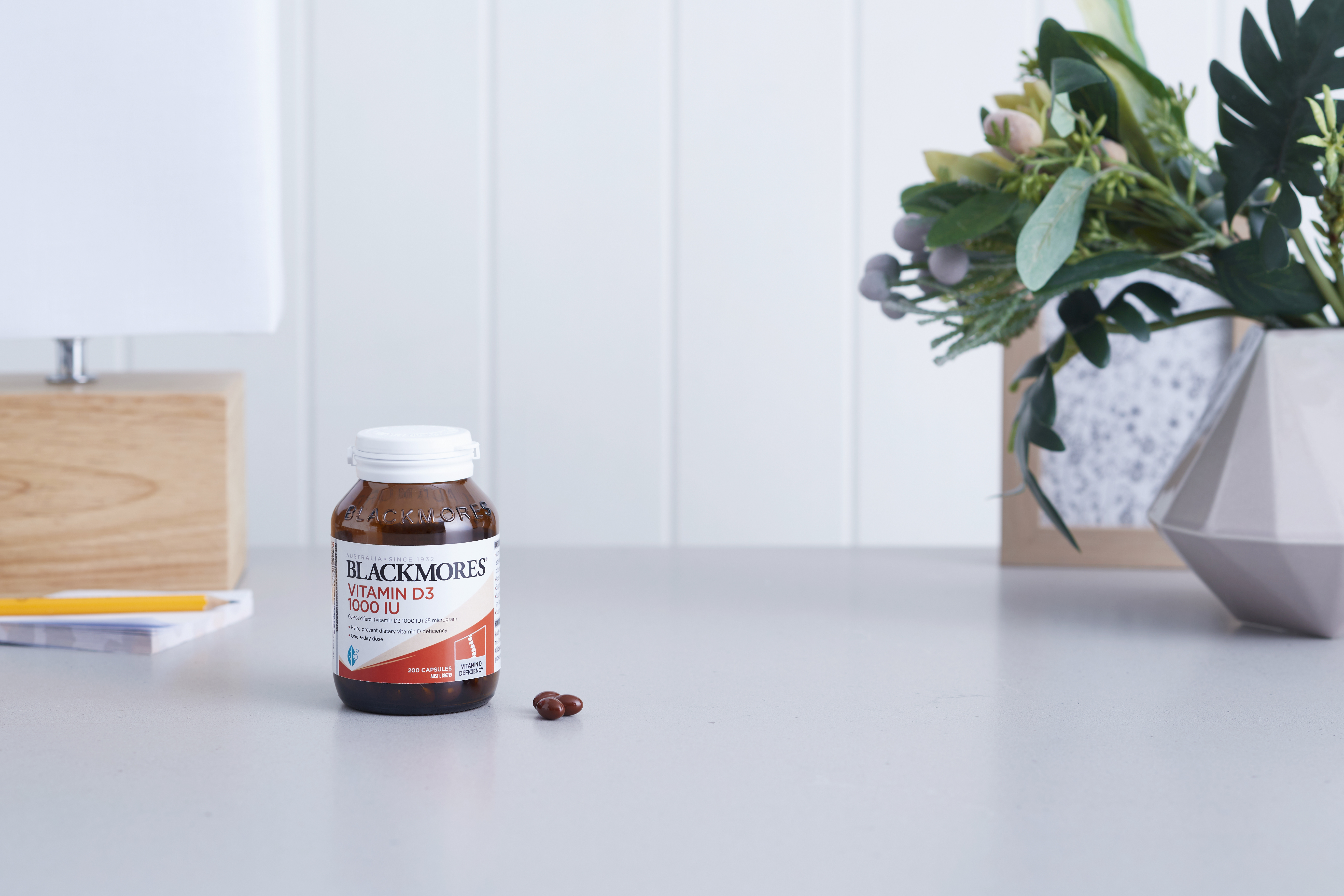
- Health hub/
- Tips & Advice on Cold, Flu & Boosting Immunity/
- Your guide to Vitamin D


A vitamin that’s well known for the role it plays in musculoskeletal health, vitamin D is soluble in fats rather than water, which means your body’s able to store it.
Unlike other vitamins, vitamin D is considered a hormone and it’s produced from cholesterol when the skin is exposed to the sun – which is why it’s often referred to as the ‘sunshine vitamin’.
What does vitamin D do?
The main function of vitamin D is to support calcium in the body and bloodstream by enhancing the absorption of calcium from food in the small intestine. Through this, vitamin D helps to maintain bone health, as well as supporting muscle strength. But vitamin D does a range of other things in the body, too. Your muscles need vitamin D to move, and vitamin D supports a healthy immune system.
Vitamin D and the immune system
Research suggests that vitamin D is involved in the innate immune system. Our innate immune system is our ‘first line of defence’ and helps to stop the entry and spread of pathogens in the body. The activation of immune cells that form part of this defence is dependent on healthy levels of vitamin D in the body.
Where to get vitamin D
While a few foods contain small amounts of vitamin D, like fish, liver and eggs, it’s difficult to get enough of it from the diet alone. As a result, most people are reliant on exposure to the sun in order to reach recommended levels of vitamin D. The big question is how much sun is enough and how much is too much?
Vitamin D and sun exposure
In Australia, we are acutely aware of the damage the sun can do and take care to slip, slop and slap – especially in summer. It’s a bit of a balancing act – it’s important to be mindful of getting enough sun exposure to achieve adequate vitamin D levels, but not too much to cause permanent skin damage.
The recommended guidelines for safe sun exposure to maintain healthy levels of vitamin D are:
How much vitamin D do you need?
An adequate intake of vitamin D for children and adults under 50 years of age is 5 micrograms (200 IU) a day. This increases to 10 micrograms a day between 51 and 70 years, and then increases to 15 micrograms a day for adults over 70 years of age.
Who is at risk of low vitamin D?
There is increasing recognition that a significant number of Australians may have low vitamin D levels, with low vitamin D estimated to affect between and one in three and one in five Australians.
You may be at risk of low vitamin D if you:
The symptoms of low vitamin D
A lack of vitamin D isn’t always obvious in adults, and some people who are deficient don’t notice any symptoms or only vague ones. The only way to measure your vitamin D levels accurately is to have a blood test.
What happens if you don’t have enough vitamin D?
Low levels of vitamin D is associated with bone weakness. Bone weakness occurs when bones lose calcium and other minerals . Being deficient in vitamin D is also associated with an increase the risk of falls in older age.
Do you need a vitamin D supplement?
Australian Therapeutic Guidelines recommend that vitamin D supplements should only be taken by people who have been confirmed as being deficient in the vitamin. If you think you may be at risk of vitamin D deficiency, talk to your GP for advice.
What’s the difference between vitamin D2 and vitamin D3?
There are two types of vitamin D available in supplements – vitamin D3 (cholecalciferol) and vitamin D2 (ergocalciferol) and people are often unsure which type they should choose.Vitamin D3 is the form that we make in the skin when it’s exposed to sunlight.

A one a day dose of Vitamin D3 to help calcium absorption and support healthy bones.




